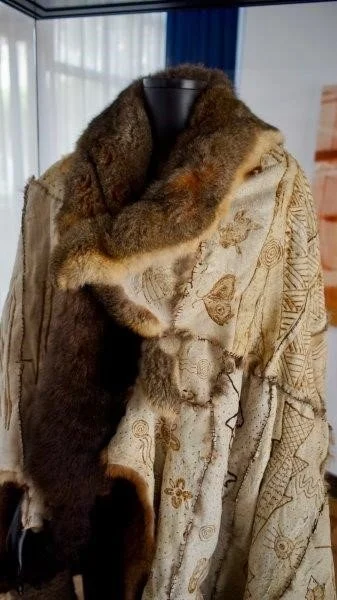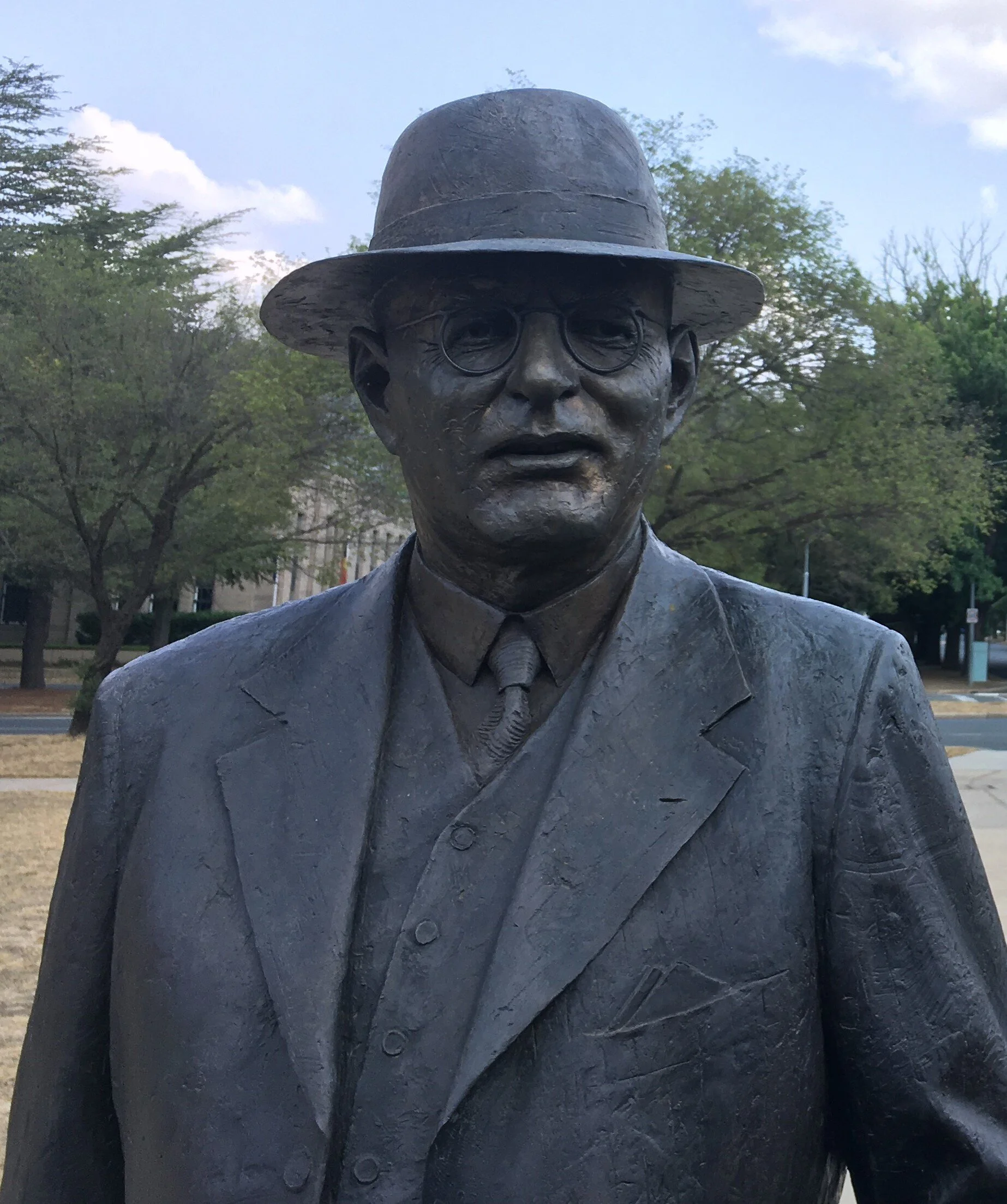No. 7 The Possum-skin cloak of the ACT Legislative Assembly, Canberra 100
Content warning: First Nations people are warned that the following content and its links may contain the names and images of deceased people.
Dear Readers
I am really pleased that today on Canberra’s 5th Reconciliation Day Capital History Here is restarting Canberra 100 with the Possum-skin cloak of the ACT Legislative Assembly.
At its heart, reconciliation is about strengthening relationships between First Nations People and all other Australians so that everyone benefits, and Australia is a stronger country.
The Possum-skin cloak shows the possibility of reconciliation. On 11 May 2019, a group of Ngunnawal women presented the Possum-skin cloak to the ACT Legislative Assembly to commemorate its 30th year anniversary. It now holds pride of place in the Assembly foyer where it is on permanent display as a symbol of the Assembly’s ongoing commitment to reconciliation.
Sixteen Ngunnawal women created the Possum-skin cloak. Elders; Agnes Shea, Loretta Halloran (Bell), Lillian Bell, Roslyn Brown, Matilda House, Louise Brown, Tina Brown, Glenda Merritt, Wendy Brown, Catherine Kindleysides, Susan Barry, Caroline Hughes, and Annette Shea. Plus, three strong Ngunnawal women, Laurie McDonald, Katrina Penfold, and Justine Brown-Bamblet. Each woman burned into the possum skins intricate and personal designs including their connections to Country.
This was the first Possum-skin cloak made by the Ngunnawal people in over 150 years, after the practice faded due to colonisation. Its making allowed younger generations of the Ngunnawal peoples to learn the practices of making and wearing possum skin cloaks and strengthened cultural identity and spiritual healing in Ngunnawal communities across the ACT region.
It also provided the broader community with an insight into the devastation colonisation brought to First Nations People. Possum-skin cloaks were once an everyday item in south-eastern Australia. Worn for warmth, used as baby carriers, coverings at night, drums in ceremony and for burial.
A person’s cloak was with them from birth to death. A single pelt wrapped a newborn baby. As children grew to adulthood more pelts were added and scored with markings that depicted clan and Country; symbols marking pivotal events or milestones such as initiatory rites of passage. The cloak became a living visual biography.
In the mid-1800s, British colonies across the south-east distributed woollen blankets to local Aboriginal people. Many Aboriginal people began using the government issued blankets rather than possum skin cloaks. Woven wool blankets, however, were not warm or waterproof like possum skin cloaks. They offered little protection from the cold and wet winters of south-eastern Australia.
It appears government blankets were first distributed in the Canberra region in 1834 at a property in Tuggeranong, Janevale, to about one hundred and twenty people. Later records and accounts tell how the local Aboriginal population were decimated as the Canberra region was increasingly colonised. The 1850’s and 1860’s were especially devastating as Aboriginal people became ill and died from a range of new diseases including measles, influenza, whooping cough, and tuberculosis.
Queen Nellie Hamilton a prominent local Aboriginal of the time left a powerful verdict on the government blanket and what was done to her people.
You come here and take my land, kill my possum, my kangaroo, leave me starve. Only give me rotten blanket. Me take sheep or calf, you shoot me or put me in jail. You bring bad sickness among us.
Reconciliation cannot be achieved without all Australians understanding and accepting the wrongs of the past and their impact on First Nations People. Harmful past policies and practices must be acknowledged so that these wrongs are never repeated. Reconciliation requires truth, justice, healing, and historical acceptance. The Possum-skin cloak of the ACT Legislative Assembly shows how a parliament, First Nations People and a wider community can use historical understanding and acceptance to reimagine the future and move towards reconciliation.
Acknowledgement: The photograph of the Possum-skin cloak of the ACT Legislative Assembly was provided courtesy of the ACT Legislative Assembly.
Please share. Let’s get the past and present talking.
References
Australian Institute of Aboriginal and Torres Strait Islander Studies (AIATSIS). 2022, Possum skin cloak, Possum skin cloak | AIATSIS, date accessed 30 May 2022.
Burch, Joy. 2019, Assembly thanks Ngunnawal women for gift of possum skin cloak, Joy Burch MLA, Speaker of the Legislative Assembly, Assembly thanks Ngunnawal women for gift of possum-skin cloak - ACT Legislative Assembly, date accessed 30 May 2022.
Burdon, Daniel. 2019, ‘30 years on, ACT less 'sceptical' on self-government, Barr says’, The Canberra Times, 11 May 2019, https://www.canberratimes.com.au/story/6117554/30-years-on-act-less-sceptical-on-self-government-barr-says/, date accessed 30 May 2022.
Couzens, Vicki. 2020, Possum skin cloaks then and now – same same but different, Australian Museum, https://australian.museum/learn/first-nations/possum-skin-cloaks-then-and-now/, date accessed 30 May 2022.
Flood, Josephine. 1996, Moth hunters of the Australian Capital Territory: Aboriginal traditional life in the Canberra region / by Josephine Flood J.M. Flood Downer, A.C.T.
Reconciliation Australia. 2022, What is reconciliation? https://www.reconciliation.org.au/reconciliation/what-is-reconciliation/, date accessed: 30 May 2022.
Thunderstone. 2022, Queen Nellie Hamilton, Queen Nellie Hamilton | Thunderstone, date accessed: 30 May 2022.





